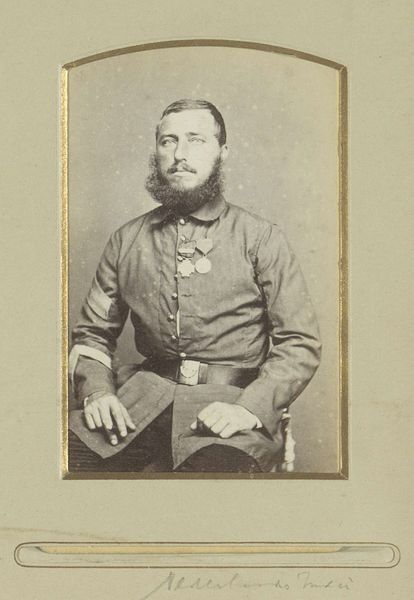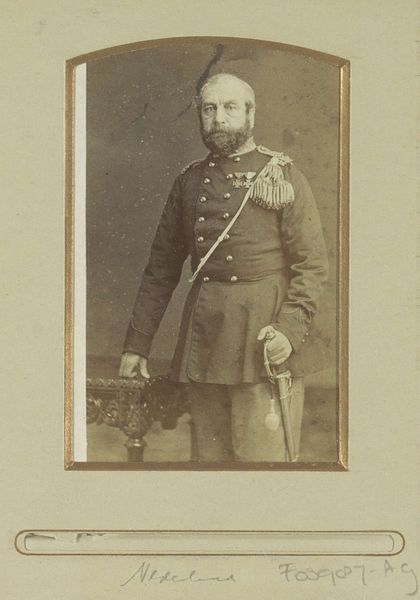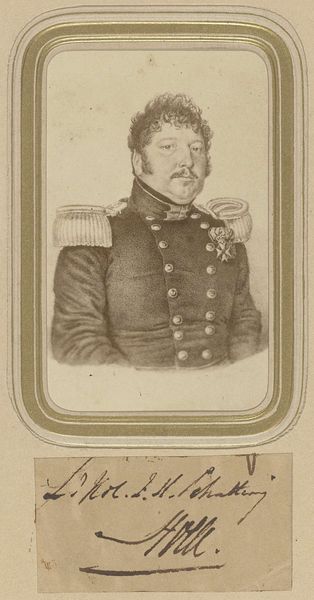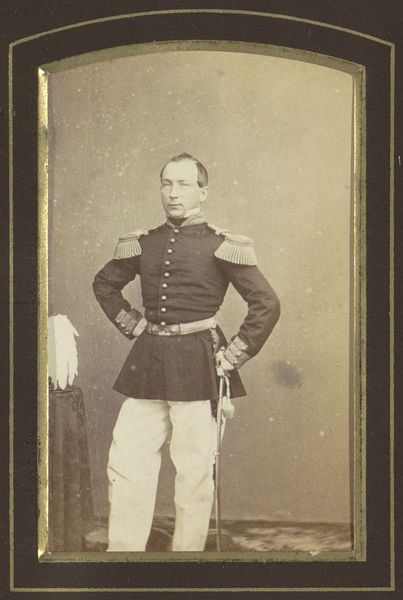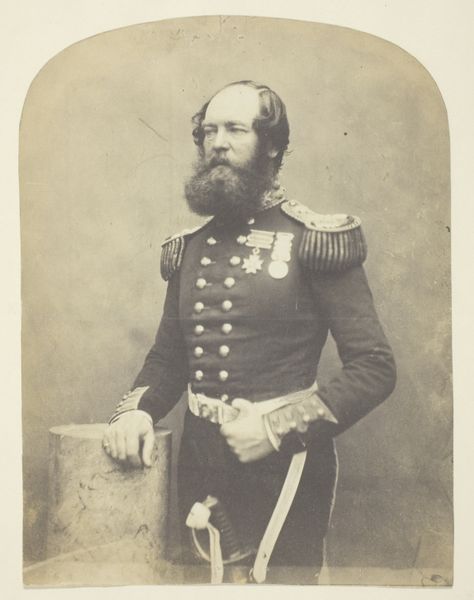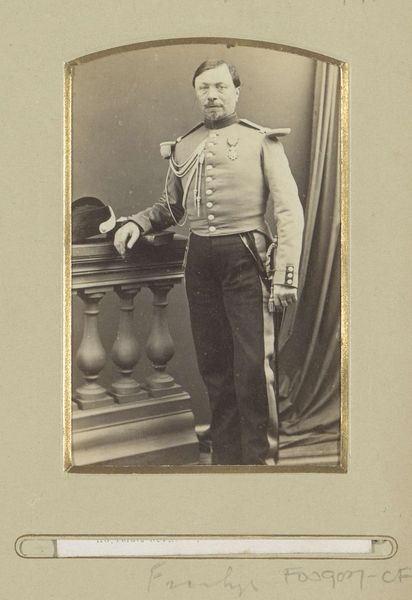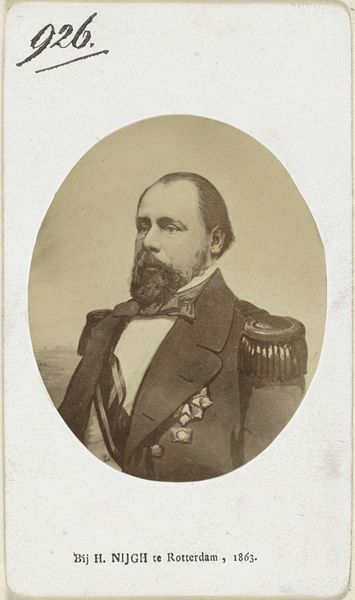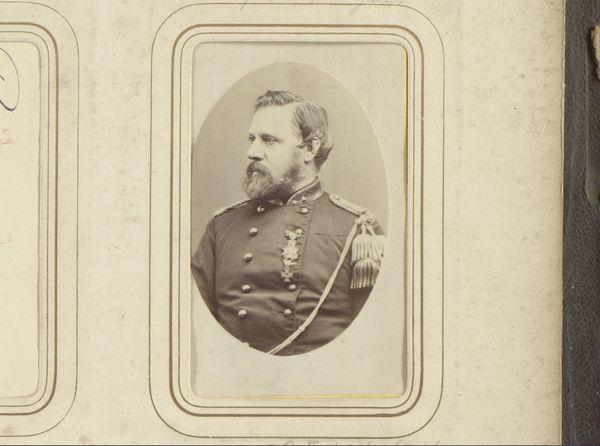
photography, gelatin-silver-print
portrait
photography
historical photography
gelatin-silver-print
19th century
academic-art
realism
Dimensions: height 103 mm, width 61 mm
Copyright: Rijks Museum: Open Domain
Editor: This gelatin silver print, titled "Portret van A.J. Doorman in militair uniform met sabel," dates back to the 1860s or 70s. It's a formal portrait, almost severe, really focusing on this man in his military garb. The lighting and pose suggest power and authority, but something in his eyes hints at something more complex. What stands out to you? Curator: It's the regalia, isn't it? The weight of the uniform, the precise arrangement of the tassels, the glint of the saber. But consider what these symbols mean: A.J. Doorman isn't merely displaying military status, but invoking the very ideas of *duty* and *sacrifice*. What does it mean, symbolically, to pose with a weapon one would rather not use? What does it conceal about anxieties related to masculine identity, for instance, or national pride? Editor: I hadn't thought of it that way. So, it's not just about showing off his rank, but projecting certain ideals or maybe even anxieties about his role. Curator: Exactly. Look at the detail in the beard, versus the rather blank expression. Doesn’t that juxtaposition invite speculation? His gaze doesn’t meet ours, signifying, perhaps, an inwardness, a moral weight he alone must bear. That saber is less a weapon than a *cross*, a symbol of burdens carried in service. Does the florid pattern of the draped table on the left disrupt this message of stoicism? Editor: I see what you mean. It definitely complicates things. I guess I’m left wondering what he was really feeling beneath all those symbols. Curator: And isn't that the power of portraiture? To allow us, across time, to imagine, to empathize, and to perhaps even see a reflection of ourselves. It also encourages us to examine the symbols we continue to give cultural value to even today.
Comments
No comments
Be the first to comment and join the conversation on the ultimate creative platform.

